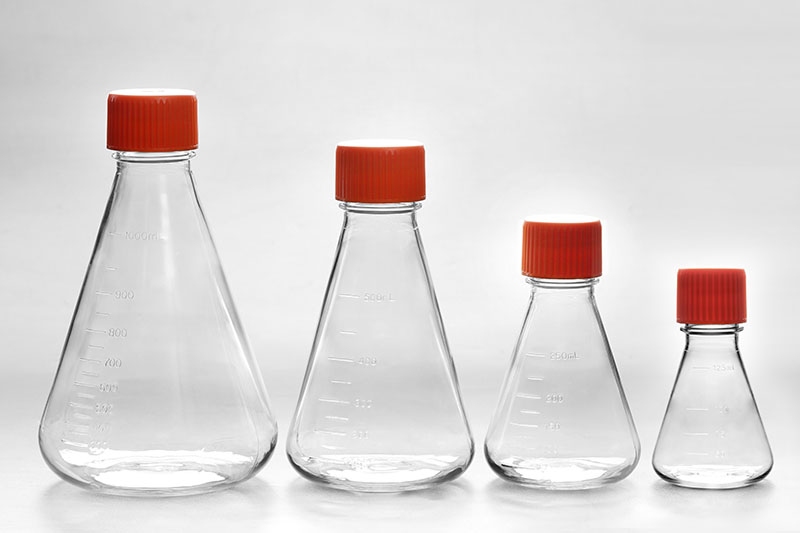Колбы для встряхивания Эрленмейера – широко используемые расходные материалы для клеток в процессе культивирования клеток. Он в основном подходит для постоянного культивирования суспензионных клеток, приготовления среды или хранения и может использоваться с шейкером для культур большой емкости. условия питания. Эти условия должны быть достигнуты с помощью встряхивающих колб
erlenmeyer. Поэтому колбы для встряхивания erlenmeyer предъявляют строгие требования к материалам и производственному процессу. колбы для встряхивания Эрленмейера обычно используют поликарбонатные материалы, не содержащие бисфенол А, и материалы PETG, а для обработки используется одноэтапный процесс литья под давлением с выдувом и вытяжкой, который также называется одноэтапным процессом производства с раздувом и вытяжкой. . Его принцип работы заключается в том, чтобы сначала влить формованную заготовку с помощью машины для литья под давлением, вытянуть горячую заготовку в продольном направлении, а затем пропустить сжатый воздух, чтобы вытянуть ее в поперечном направлении, чтобы получить продукт той же формы, что и полость пресс-формы. Процессы вытяжки, вытяжки и выдувания этого метода обработки выполняются последовательно на одном оборудовании. Высокоскоростное формование может быть достигнуто без повторного нагрева заготовки. Отбрасываются самые сложные части процесса и используется наиболее оптимизированная структура процесса. Непосредственно реализовать стабильное производство продуктов, повысить качество продукции и сохранить энергосберегающие технологии. контакт и герметичность с крышкой бутылки, а также большее сопротивление давлению, что закладывает основу для плавного хода работы с клеточными культурами. generally use bisphenol A-free PC materials and PETG materials, and the processing adopts a one-step injection stretch-blow molding process, which is also called a one-step injection stretch-blow production process. Its working principle is to first inject the molded blank by an injection molding machine, stretch the hot parison longitudinally, and then pass in compressed air to stretch it laterally to obtain a product with the same shape as the mold cavity.
The injection, stretching, and blow molding processes of this processing method are completed in sequence on one equipment. High-speed molding can be achieved without repeated heating of the preform. The most complex process parts are discarded and the most optimized process structure is used. Directly realize the stable production of products, improve the qualified rate of products, and save energy technology.
The erlenmeyer shake flasks produced by the injection stretch-blow production process has a smooth and round mouth, better contact and tightness with the bottle cap, and more pressure resistance, which lays the foundation for the smooth progress of cell culture work.
The FAI climbed 5.9 percent year-on-year in the first 11 months of 2018, quickening from the 5.7-percent growth in Jan-Oct, the National Bureau of Statistics (NBS) said Friday in an online statement.
The key indicator of investment, dubbed a major growth driver, hit the bottom in August and has since started to rebound steadily.
In the face of emerging economic challenges home and abroad, China has stepped up efforts to stabilize investment, in particular rolling out measures to motivate private investors and channel funds into infrastructure.
Friday's data showed private investment, accounting for more than 60 percent of the total FAI, expanded by a brisk 8.7 percent.
NBS spokesperson Mao Shengyong said funds into weak economic links registered rapid increases as investment in environmental protection and agriculture jumped 42 percent and 12.5 percent respectively, much faster than the average.
In breakdown, investment in high-tech and equipment manufacturing remained vigorous with 16.1-percent and 11.6-percent increases respectively in the first 11 months. Infrastructure investment gained 3.7 percent, staying flat. Investment in property development rose 9.7 percent, also unchanged.
 English
English



















































